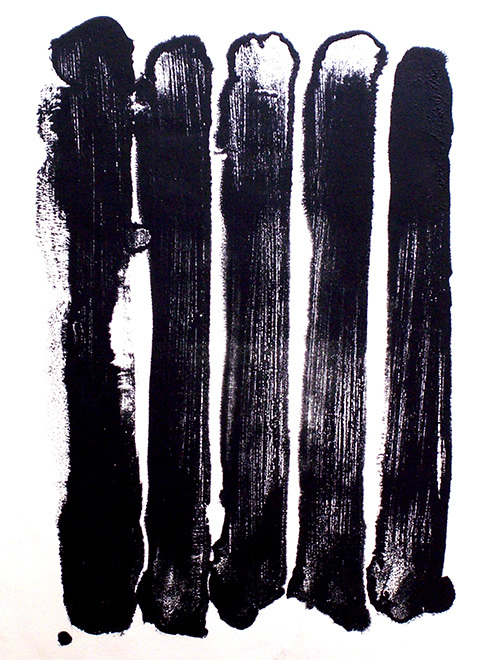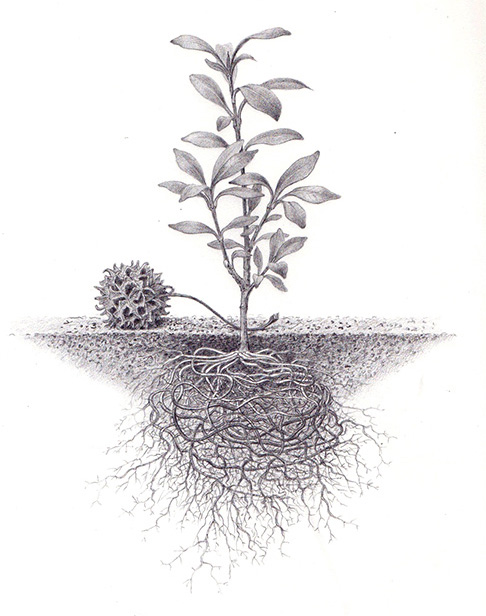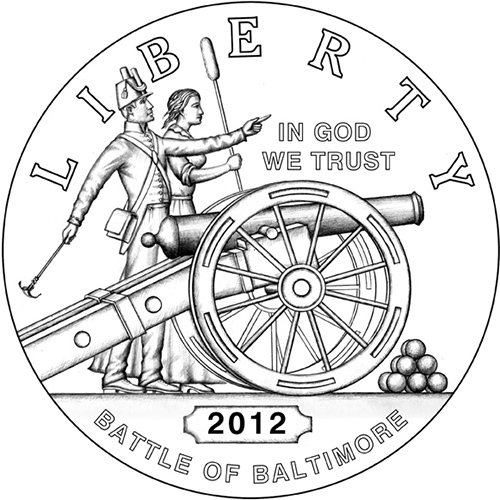RETROSPECIVE
This retrospective is a work in progress. I'm showing some of my oldest work with a few words about when, where and why I made them.
Ark 1974

I was 18 when I painted this, and I can still remember the excitement as I completed it. It seemed to have that elusive "something", a quality I still can't define, but one that makes for a satisfying image. I was enjoying a gap year, working days at a gas station in Cambridge, Massachusetts and taking figure drawing at night. I had already set my heart on becoming an artist.
Fluid Bars 1975
After my year off I began studying art at Brown. I had done some silkscreening and was drawn to prints. The printmaking teacher emphasized mark making. Minimalism was in the air, just beginning to be overtaken by conceptualism. These ideas about art influenced the simple structure of the print which was made by painting four vertical stripes with water on the litho stone and following with then horizontal stripes in black over the wet verticals. The black flowed into the water, creating the image you see.
Five Bars 1975

This was the follow up. Five bold vertical stripes, flowing into the field.
While I quickly moved onto other styles after leaving Brown, rejecting abstraction in favor of figurative work, the simple structure of these prints has stayed with me. I love to compose with repeated verticals and have used the device again and again over the years. What accounts for the persistence of this kind of structure? I like it, but why?
Abstract 1976
I moved to San Francisco after dropping out of Brown and continued making abstract work, some of it sucessful, but I was growing disatisfied with the range of meanings that were possible with an abstract image. I began to work with figurative imagery.
Wind 1977
While I brougth figures into my work, I was still emphasizing marks, hence the insistent diagonal lines that make up this print. It expressed the feeling of dissolving in the wind. I liked that imagery could express more than abstraction, but wanted to keep the physicality of the marks I’d been making in abstract works. I realized though that my abstract work had been visually stronger and that if I wanted to use figurative imagery, I had to learn to draw better. So began a long period of study and practice.
Figure Drawing
Learning to draw isn’t easy. It took years, but eventually I was able to draw well. I understood the figure and its anatomy as well as how to render it on paper. Drawing is a skill I had to have to be the kind of artist I wanted to be. In the 70’s conceptualism came to the fore and the “dematerialization of the art object” was all the rage. I was all for the material art object, seeing art as a path away from empty intellectualization towards a mastery of materials that required physical involvement with the process. Drawing developed that mastery. It brought art away from the merely mental into the world. It is action.
 |
 |
The Clock Watcher 1979
This was my first photo realistic project. I had a picture taken of me working the drill press at Vanishing point, a plexiglass fabrication company I worked at making display fixtures for stores like Macys. The hours went by slowly at the job and I was a real clockwatcher. I had my first chance to do commercial art at Vanishing Point. The boss Bill Campbell wanted to make promotional products to sell to macdonalds. An early version of the happy meal toys. His idea was paper airplanes printed to look like spaceships. I jumped at the chance to design them, bought myself an airbrush and set to work in a corner of the shop. I got better and better, but the idea never sold so it didn’t go anywhere. I was happy with the products.
Spaceship 1980

Desire 1982

I liked that the airbrush gave a clean finished look, one that I still couldn’t achieve with brush and paint. I made a poster of Mark Eitzel’s American Music Club and put it all over town. It was a great time for music and I went out to clubs a lot with my future wife Teresa Yabut. I was working at Macys in the display department and got to make lots of display props. Hired to do plexi, I moved on to carpentry, building hundreds of parsons tables, then to the windows where I got to do all kinds of painted display props. This was a happy time for me. I began to feel some confidence in my ability as an artist. It was time to move to New York!
School of Visual Arts
 |
I enrolled in the School of Visual Art to finish my degree. I had credits from Brown and CCSF so was able to do it an four years, going at night after work. In the day I would work at Evergreene studios, designing and painting murals, and at night it was off to class. Looking back I’m amazed at my energy. I couldn’t do it now. We had a nice apartment on Washington Place and every thing was in easy commuting distance. I was in the illustration department, because it had an emphasis on drawing and I wanted to learn how to make images. At the time there was demand for illustrations in publishing and I aspired to have mine published in magazines. Just before graduation I had a bit of a disappointment. Seniors had to submit a portfolio and the best would be chosen for inclusion in a book published by the school. I was confident of my work, and put together what I thought was a good portfolio, but was rejected. It was a blow to my confidence but stirred my stubborn determination to succeed. Stubbornness in the face of disappointment has always been my way. Perhaps it has led me astray. |
Chicago Mural

Evergreene was a newly established mural and decorative painting company when I started working there. I had the opportunity to paint many large murals. This is a panorama of Chicago Ipainted at Evergreene in 1987
The September after I graduated I quit my job at Evergreene and started to make my living as an illustrator. In those days one had to drop off a portfolio at a publisher and pick it up the next day, hoping that they would use you. I printed postcards to mail and to keep in the portfolio and would carefully check to see if the art director had take one.
I had three portfolios and walked from office to office, keeping them in circulation. After fifty drop offs, I got my first assignment from the Journal of Accountancy. They became regular clients and eventually I added Home office Computing, and a sprinkling of others, enough to eke out a living. Pay was $250 to $500 an illustration, so I had to make a lot of them.
Factory Illustration

An illustration made for the Journal of accountancy in 1989

Illustration made for Cha Tea in 1990
After finishing school I went back to making some personal work after several years in which I had focused only on school work. A series called Walkers was the result. Inspired by Muybridge and my interest in Tai Chi. The grouped verticals of my early work made a reappearance.
Walkers 1987
By 1990 I had a studio at 368 Broadway just below Canal street. I would stay there for 15 years. The illustrations weren’t making enough money so I started approaching interior designers to get work doing murals, a craft I had well learnt at Evergreene. I met David Barrett who gave me lots of work over the years until he died in 2006, as well as many others who kept me busy doing murals throughout the 90s.
I decided to go to graduate school. I still wasn’t satisfied with my skills and hoped that more training would help.
I enrolled in the New York Academy, a school that emphasized drawing and painting the figure. I did succed in improving my skills, but never enough. I was going part time again, painting murals and illustrations for money. I made a series of drawings that were shown in my first exhibition in the Gallery Juno in 1993. My friends bought a lot of work, but the show led nowhere in the end. I still like some of the work including this pen and ink of a rainy day.
Rainy Day 1993

After graduation I put my new skills to work on a series of murals for Masonic Hall in New York. After completing the murals for the Livingston Library I had a real feeling of satisfactionl
Masonic Hall 1995

My study of realistic and academic painting had been about improving skills. It wasn't the way I wanted my personal work to look, but the skills gave me the mastery of my materials that I had sought so long ago. It had taken 20 years of study and hard work. Now I was free to pursue other styles. This began a period of creativity, a time when I had a lot of fun doing whatever I pleased.
Head 1996

This was the beginning of a good period. The 1990's were a prosperous time, and though the financial anxieties that come with being a self employed artist were always there, I was able to make a decent living painting murals. My personal work was flourishing and though I didn't have a show for a long time, I participated in open studios that gave me some exposure and a few sales.
The decade ended and the new millenium began with an optimism that proved unfounded. We had moved to an apartment on Maiden Lane at Broadway. On September 11th 2001 I was at home when the first plane struck. I left and watched the buildings come down from Worth Street. We couldn't go back home for several weeks.
It was a strange time. I had just finished this silkscreen print on September 10.

Things went on much as before, I got good commissions for murals and continued working on my prints and paintings. Reaching out as best I could to gallery owners in hope of finding a home for them. At last I had a show at the Thomas Werner Gallery in Chelsea.

Meanwhile rents were rising and the recession had taken a toll on my business. In the spring of 2005 I moved to the Bronx. This marked the beginning of a new period in my life and Art. After living in the canyons of Wall Street for ten years, the parks and open space of the Bronx were a revelation. I could see the sky from my bedroom window. We were a few blocks from the Botanical garden. I joined and enjoyed many days exploring the gardens developing an interest in nature. I started taking courses in botanical illustration at the Garden which has an excellent program. Once again I was falling in love with a dying art, but the courses were great.
Gardenia 2006

As the decade progressed murals became a harder sell and when housing went bust, my business went with it. I had to find new ways to make money. My pondlife illustration for White Mountain Puzzles was a move into a new area.
Pondlife 2008

I applied to become a designer at the United States Mint and began designing coins in 2011.
Coin Design 2011

The recession continued to take its toll, and it was time to make some changes. A friend had told me about the Scenic Artist Union whose members did work on movies, TV shows and theatre. I applied for membership, and after a very difficult test I was admitted. This is one of the four paintings I made as part of the test.
Eastern Port 2012

Since joining I've been employed on many different productions. The work is lucrative if exhausting and the people are great to work with.
On the set of Elementary

I'm happy to be freed from the need to make money from my art, and am going back to some of the themes that have moved me in the past, making new paintings and new discoveries.
Faces and Figures 2014

To be continued.....

